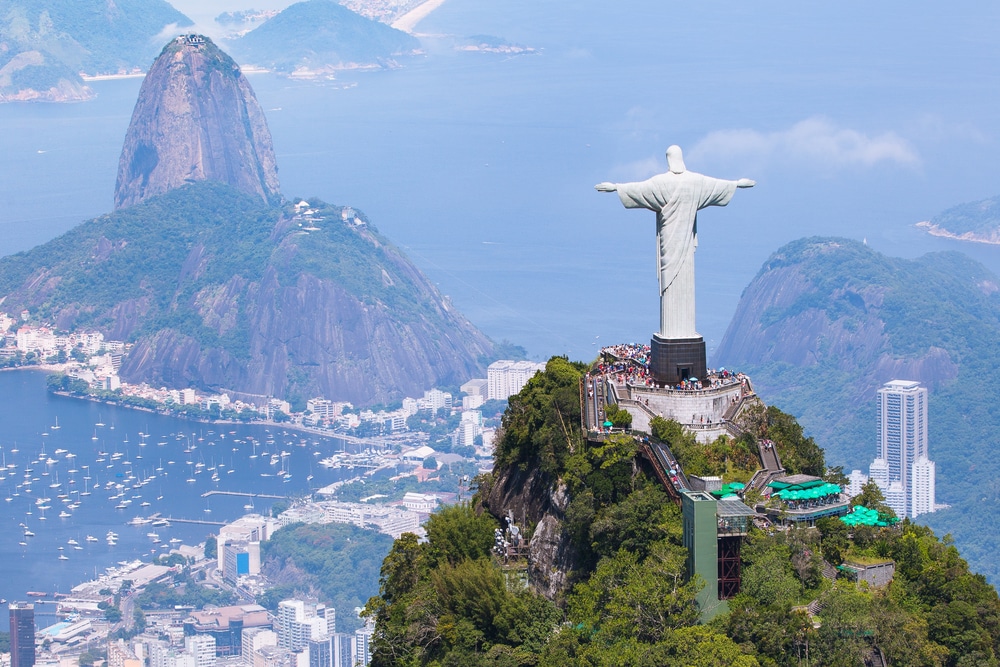If you want to experience the Brazil of the Brazilians in all its facets, you should not linger on the beach of Copacabana or the Sugarloaf Mountain, but go inland from the coastal strip. Only then will the identity of this country with its 140 million people be approached. On Corcovado, the colossal figure of Christ spreads his hands over Rio. Some interpret this as a gesture of hope for a nation where the joy of life is written on people’s faces and where bitter poverty meets immeasurable wealth. Brazil has many faces. It is worth discovering them.

Football and carnival are a glimpse into the soul of Brazilians. In the stadium of the match, the cheers of the masses explode, while dancing to the “Carnaval do Brasil”, the streets and alleys of the country become a space full of magic. Carnival sees itself as an archetype of sensuality and the joy of existence.
In Brazil, people are not immodest when it comes to contemplating and evaluating supernatural things. They are convinced that the Lord God created the world in six days. He reserved the seventh day to bring Rio de Janeiro to life as the most beautiful of all cities. Rio is a city of contrasts with a jungle in the middle of the city, with the Tijuca National Park, mighty waterfalls and an interesting museum of contemporary art. And of course with Copacabana, a four-kilometre-long beach that winds around the Atlantic Ocean in the shape of a crescent moon and is bordered by the promenade “Pricesinha do Mar” (Little Sea Princess).

The coastal strip of Brazil covers 7400 kilometers, and in 1500 twelve caravels from Portugal anchored in a bay near Itaceré in the distant state of Bahia. Originally, their captain Pedro Alvares Cabral only wanted to load pepper onto his ships there, but this was the start of Brazil’s colonial history. The stone heritage of this era can be admired in many Brazilian cities today. In Salvator da Bahia, the former center of the slave trade. In Ouro Preto, whose facades have been declared a “Cultural Treasure of Humanity” by UNESCO. And last but not least, in Recife, which has chosen itself as the “Venice of Brazil”.
Geologists have counted three hundred waterfalls in this large South American country. The most powerful are the famous Cataratas do Iguacu with a length of 2.7 kilometers. The metropolis of Sao Paulo owes its importance to the abundance of coffee beans. Until the 20th century, Brazil produced no less than three-quarters of world trade.

The Amazon, high in the north, is an abundance of landscape. This is the other Brazil with endless waterways as the lifeline of Amazonia. And it is the threshold to the primeval forests, where gold diggers once sought their fortune and overlooked the infinity and beauty of this landscape. In Manaus, which became a kind of hub for traveling into the jungle, something unusual was created: an opera house. Christoph Schlingensief staged the “Flying Dutchman” there.
But Brazil’s largest city, Sao Paulo, also has a lot to offer.
Brazil is a country that arouses curiosity and is waiting to be visited. A journey through the different regions can be a journey to oneself and to the wonders of a unique variety of landscapes.
Travel information Brazil
| Capital | Brasilia |
|---|---|
| Form of government | Federal republic |
| Currency | Real (BRL) |
| Area | approx. 8,515,770 km² |
| Population | approx. 208,360,000 (as of 2017) |
| Languages | Portuguese |
| Electricity grid | The mains voltage varies. Between 110 and 230 V. 230 Volt / 60 Hz |
| Area code | +55 |
| Time zone | UTC-5 to UTC-2 |
Können wir Ihnen helfen?
Benötigen Sie Unterstützung bei Ihrer Reiseplanung oder weitergehende Informationen zu einzelnen Reisezielen? Wir freuen uns über Ihre Kontaktaufnahme.


